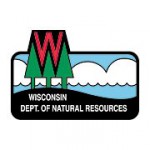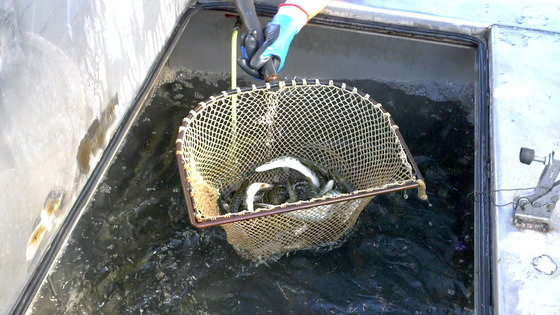DNR’s First Round of Sampling Shows PFAS Contamination at Surface Water Monitoring Locations in Wisconsin
PFAS are a group of human-made chemicals used for decades in numerous products, such as non-stick cookware, fast food wrappers, stain-resistant sprays and firefighting foam.
MADISON, Wis. – The Wisconsin Department of Natural Resources has received the first round of per- and polyfluoroalkyl substances (PFAS) surface water sampling results from the State Lab of Hygiene. Results show elevated levels of PFOS – one of the most widely used and studied PFAS chemicals – in Starkweather Creek in Madison and Silver Creek in Monroe County. Lower levels of contamination were found in three other state water bodies. The highest concentrations of detected compounds tended to occur downstream of known contaminated sites and in smaller streams with low flow.
PFAS are a group of human-made chemicals used for decades in numerous products, such as non-stick cookware, fast food wrappers, stain-resistant sprays and firefighting foam. These contaminants bioaccumulate in the food chain and have made their way into the environment through accidental spills of PFAS-containing materials, discharges of PFAS-containing wastewater to treatment plants and certain types of firefighting foams. According to the U.S. Environmental Protection Agency (EPA), exposure to some PFAS substances above certain levels may increase the risk of adverse health effects, such as thyroid disease, low birthweights and cancer.
The water samples were taken this summer and are part of a broader effort by the DNR to assess PFAS contamination in surface water across Wisconsin. Samples in the first round were taken from five waterbodies near known or suspected PFAS contamination sites. The testing sites include fire-fighting training grounds, areas near where PFAS was detected in drinking water wells, as well as two locations where elevated fish-tissue or wildlife blood levels were previously detected.
“The DNR will work with state and local public health officials, the city, the airport and Wisconsin Air National Guard to expand and accelerate the investigation at Truax and Dane County Regional Airport to address public concerns based on the results of this first sampling round,” said DNR Environmental Management Division Administrator Darsi Foss. “We will continue to step up our efforts to investigate PFAS contamination in Dane County and across Wisconsin, and work with all our partners to address concerns that may arise.”
Samples were analyzed for 36 PFAS compounds, including PFOS and PFOA, at the Wisconsin State Laboratory of Hygiene. Although initial analysis reveals not all the 36 PFAS compounds were detected, some of the compounds were detected at all locations.
Since EPA does not have a federal drinking water standard for these contaminants, like other states, Wisconsin is working to address this critical issue. The rulemaking process started with the Wisconsin Department of Health Services recommending a cumulative groundwater enforcement standard of 20 nanograms per liter (ng/L) or parts per trillion (ppt) for PFOA and PFOS. The recommended standards will be enforceable once the rules are finalized. Wisconsin is currently developing groundwater, surface water and public drinking water standards for PFAS based on the DHS recommendations for groundwater standards given to the DNR in June.
Although dermal exposure (coming in contact with the water while wading, kayaking, etc.) where PFAS is present is not an immediate health concern, DHS does recommend people avoid drinking or accidentally swallowing surface water with elevated levels of PFAS, and, to wash their hands after wading or playing in water with elevated levels of PFAS. DHS also advises that pets should be rinsed with clean water to avoid ingesting PFAS that may be on their fur. For more PFAS health-related information, please visit the DHS website.
The DNR maintains an online health guide for eating fish in Wisconsin, which includes fish consumption advice for every waterbody in the state. Advisories for the waterbodies sampled during this effort will be updated as needed after the fish results are received.
Actions Associated with Starkweather Creek
The West Branch of Starkweather Creek near Fair Oaks Avenue, in Madison, had the highest concentration of PFOA and PFOS, at 43 and 270 ppt, respectively. One known source of PFAS near the creek at Truax Field Air National Guard Base, where PFAS containing fire-fighting foam was used. However, because there may be additional PFAS sources nearby, further investigation of the area is planned, and results from the second and third rounds of sampling will be critical in guiding future response activities.
In addition to the surface water testing, staff collected fish samples from Lake Monona near the Starkweather Creek outlet for PFAS analysis. Once the fish samples are received, the DNR and DHS will review the results and make any necessary revisions to local fish consumption advisories.
The DNR is currently evaluating the need for any additional actions, such as investigating possible sources of contamination, conducting a more comprehensive fish contaminant monitoring project on Lake Monona in 2020, and targeting a variety of species for PFAS and other contaminants.
Other PFAS actions in 2019
Under Governor Tony Evers‘ Year of Clean Drinking Water initiative, the DNR has taken several steps to address PFAS contamination, including a department request sent in July to 125 municipal wastewater treatment facilities to begin sampling and analyzing for PFAS.
The governor has also asked the DNR to begin PFAS rulemaking on surface water, drinking water and groundwater standards, and via executive order directed the DNR to work with state agencies and local partners to take several actions, including establishing a PFAS Coordinating Council and public information sites to inform the public on the matter of PFAS and the risk these chemicals pose to public health and Wisconsin’s natural resources. Please visit the DNR website for more information on PFAS.
NOTE: This press release was submitted to Urban Milwaukee and was not written by an Urban Milwaukee writer. While it is believed to be reliable, Urban Milwaukee does not guarantee its accuracy or completeness.
Mentioned in This Press Release
Recent Press Releases by Wisconsin Department of Natural Resources
DNR Seeking Public Comment On Master Plan Variance To Add Trailhead Shelter, Storage Facilities To Peninsula State Park
Jul 17th, 2025 by Wisconsin Department of Natural ResourcesPublic Comment Period Open Through Aug. 7
DNR Publishes 2024 Fish Stocking Summary
Jul 16th, 2025 by Wisconsin Department of Natural ResourcesOver 5 Million Fish Stocked Into Wisconsin Waters






















